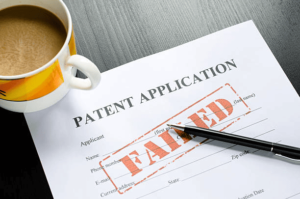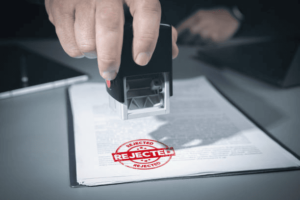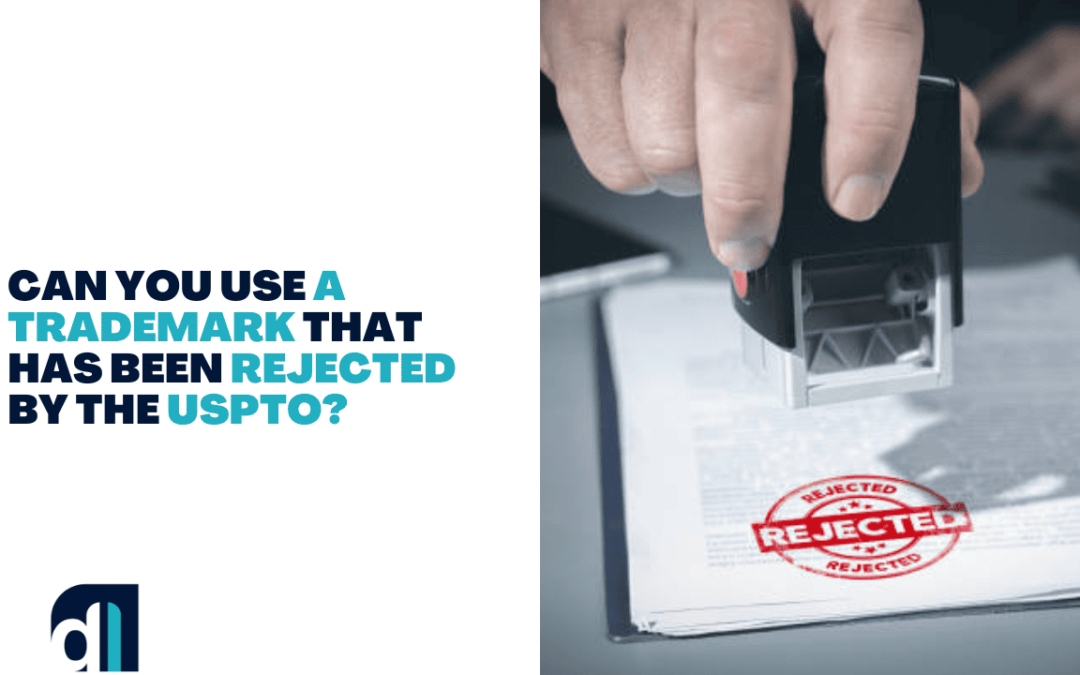The process of trademarking a brand with the United States Patent and Trademark Office (USPTO) is one of the most secure methods of safeguarding the image of your brand, reputation, and equity.
However, not all applications reach the final approval stage as the process is very competitive. A rejection can hurt and that is why most business owners find themselves in a dilemma of what next to do.
When one applies for a trademark and is rejected, it does not mean that he cannot utilize his trademark, the first thing he should do is file an appeal.
In this blog, we’ll discuss why your trademark application might be rejected in this case, whether you can use a rejected mark, and what legal and business consequences you need to consider before going further.

Understanding Why a Trademark Gets Rejected
Trademark applications can be rejected for several reasons, including:
- Likelihood of Confusion
If the proposed mark is too similar to an existing registered trademark, it may cause confusion among consumers.
- Descriptiveness
Marks that merely describe a product or service often fail to meet trademark requirements.
- Generic Terms
Words that are too common or generic cannot be trademarked.
Understanding the reason for rejection is essential because not all rejections mean the mark cannot be used. If the trademark office desires clarification, further documents, or conflict-solving, it sends an office action, and it is necessary to reply.
Using a Rejected Trademark Without Registration
Trademarking with the USPTO for a trademark is not mandatory in business. Even if you are not registered, common law trademark rights allow you to have some rights if you use your mark in the flow of trade. However:
- Your protection is only valid in the territories where you actively use the mark.
- Protection of common law rights can be a problem if not backed by federal registration.
- A rejected trademark can be dangerous still for bearing risks such as conflict with a registered mark.
Although you can legally use a refused trademark, you must ensure that you do this carefully and with your eyes wide open to what can happen.
Consequences of Using a Rejected Trademark
Using a rejected trademark comes with strong legal and business risks, including:
- Infringement Claims
If your rejected trademark is similar to another registered trademark, you may face a lawsuit.
- Limited Legal Protection
You may struggle to stop others from using your mark.
- Rebranding Costs
If legal challenges arise, you may have to rebrand, which can be costly and damaging to your reputation.
For example, a business that continued using a rejected mark without addressing the reasons for rejection might face cease-and-desist letters or litigation.
What to do After a Trademark is Rejected?
Getting a trademark rejection from the USPTO can be quite daunting, but it doesn’t have to be the end of your branding.
But there are several courses of action that you could follow to manage the rejection and position yourself properly. Should you think the USPTO was wrong to dismiss your application, you can still appeal to the body and support your decision with facts.
In another case, you may file a new application and make amendments to it in an attempt to correct the specific grounds for refusal for instance altering the description of the goods or slightly changing the mark.
In some cases, changing the brand altogether might be the most reasonable option, particularly if the trademark might encounter numerous challenges in the registration process.
This is true for each of the options, and many times choosing the strategy may need professional help from a trademark attorney.

When Is It Safe to Use a Trademark That Has been Rejected by USPTO?
There are chances, where you can use your trademark that has been rejected, and might still be considered relatively safe:
- Non-Substantive Rejection
If the rejection was procedural or based on correctable errors.
- Clear Distinction
If the rejection doesn’t involve a likelihood of confusion with existing marks.
- Limited Use
If the mark is only being used in a specific geographical area with no registered competing trademarks.
If you seek help from a professional, you are likely to understand the available choices, and potential drawbacks, and enhance your possibility to obtain protection of a trademark.
Why Legal Consultation and a Trademark Attorney Is Important?
Trademark law is quite intricate, and arguing a rejection, without an examining attorney can prove very expensive.
Our experienced trademark attorney can:
- Evaluate the rejection notice from the USPTO and decide what has to be done next.
- Assistance in changing and submitting your application again.
- Give information on whether it is legal to use the rejected trademark.
Several companies have been able to successfully challenge trademark rejections lawfully, and that is where legal advice matters. Trademark registration is crucial to avoid potential legal issues.
If you have questions about handling trademark rejections, reach out to Drishti Law at 773-234-1139 for a free consultation. Our experienced attorneys are here to guide you through the registration process, helping to ensure that your brand receives the protection it deserves under state and federal laws.

Sahil Malhotra
Sahil Malhotra is an Intellectual Property Attorney, who founded Drishti (“vision”) law because of his vision in protecting dreams and ideas.
He provided individuals and small businesses with an opportunity to enhance their IP’s value by helping them register trademarks and successfully argue against office actions. In addition to his training and experience, he has been deeply involved in the multifaceted IP portfolio at UIC and continues to be associated with IP organizations and conferences.
To know more about Sahil Malhotra — Click Here
You may follow Sahil Malhotra on Facebook: Sahil Malhotra and on Instagram: @Sahil Malhotra

